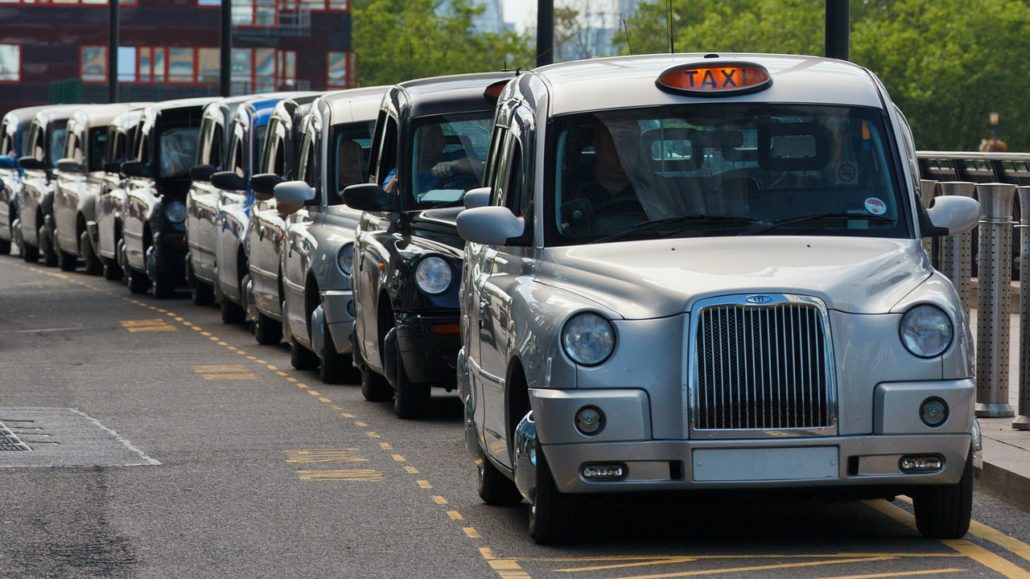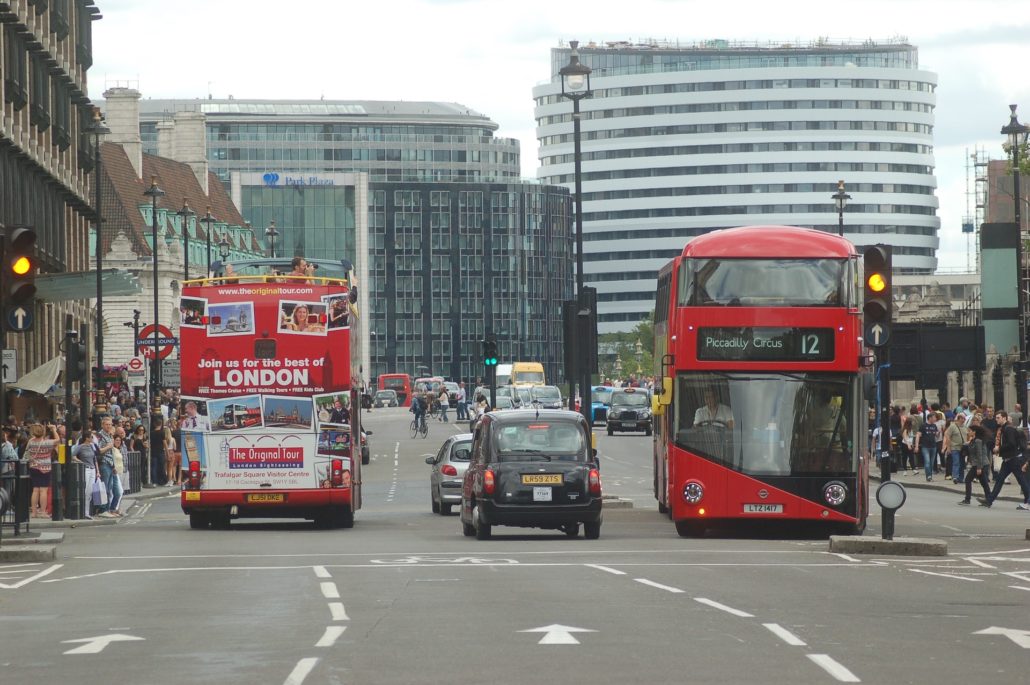Public Transport For The Disabled
Has Public Transport Accessibility Forgotten Deaf People?
Let’s think for a moment about public transport for the disabled traveller.
Every day thousands of deaf and hard of hearing people use public transport to get to work or schools, visit friends and family or attend important appointments. The truth is, it really sucks having to use public transport when you’re deaf or hard of hearing. Which is why one of the most infuriating questions we often get asked is ‘Are deaf people allowed to drive?’
Of course, deaf people are “allowed” to drive, are hearing people allowed to listen to ear-splitting music while they drive, yes they are. You don’t need to be hearing to receive your driver’s license.
The reason this question infuriates us, besides that it’s ignorant and insensitive, is that if we weren’t “allowed” to drive we’d be pretty screwed. Because we hate having to take public transportation, it is one of the most difficult things deaf people struggle with.
In this article I’ll focus on the 3 main modes of public transportation in the UK:
- Train
- Bus
- Taxi
Public transportation from a deaf person’s point of view
Transport for the disabled commuter isn’t always practical. Deaf and hard of hearing people who rely on public transport often struggle to reach their work or schools on time.
We can’t hear the announcements, so we miss information regarding arrival times, unexpected delays or changes in schedule or platform.
When you are hard of hearing you rely more heavily on visual displays. Unfortunately, such displays at bus stops and train stations are often inadequate, broken or non-existent, leading many deaf people to arrive late to work.
Tardiness or absence from work has resulted in many of us being unfairly reprimanded and some even fired due to their frequent lateness.
Being unable to hear the intercom announcements have created transport barriers for disabled people. The deaf community deserves equal access to transport.
Transport authorities in the UK are covered by the General Equality Duty described in the 2010 Equality Act as organisations that exercise functions of a public nature. As such, transport for the disabled and deaf public must be improved.
Trains
Many deaf people avoid travelling during peak hours because of the inevitable arguing that ensues when someone else is more “deserving” of your seat.
Let’s assume a pregnant mom-to-be politely asks if she can have your seat. The train is crowded and you’re unable to read her lips or body language. You stay seated. Her husband comes to her aid and berates you in front of all the people. He grabs your arm and pulls you off your seat, triumphantly giving the seat to his wife. Humiliated and scared you tell yourself ‘never again’. You now avoid the train at all costs. Thank God you’re “allowed” to drive.
Some underground stations do have hearing loops, but they are problematic because the staff are usually not aware when they aren’t working and don’t know how to fix it. Also, hearing loops are not suitable for all deaf people because the tone of the announcement may be outside the range of what is audible or it’s not loud enough.
Other passengers can be a nightmare too and present yet more transport barriers for disabled people.
An older husband and wife got on the train and he asked me to get out of my seat. With a fairly empty train, and my hearing dog tucked up on the floor of the next seat, settled and entitled to a space, I refused, as I didn’t want my dog in the aisle tripping up people. He pulled me out of my seat and when that didn’t work, he grabbed my bag. The other passengers started shouting at him to leave me alone. He threw my bag at me and stalked off, which was when I noticed he had a hearing aid.
A woman pushed me so hard that I fell over, as she shoved her way past me to an empty seat on the London Underground, she shouted that my dog was in the way – then she got off just one stop down the line. All that to sit down for one stop.
Another passenger punched me hard in the arm as my dog’s tail happened to touch him when he was wagging it.
My dog was almost chopped in half as we boarded an underground train recently – I hadn’t realised the doors were about to shut and luckily I pulled him out of the way just in time.
I am often left to stand and keep my balance, manage my hearing dog and shopping on the tube or train while everyone around me sits glued to their seats, along with a blind passenger and his guide dog too!
Other times taking the train sucks for a deaf person:
- You miss your train. The platform has changed at the last moment and the display board isn’t updated and of course, there is no staff around to ask.
- Unsure whether you’re in the right train compartment. Some trains split in two at a station and you need to be in the correct part which goes to your destination. I need to find someone and ask – and hope communication with them isn’t a problem.
- The train did not stop at your station. Oh, you didn’t know that was going to happen. They announced it like five times. You didn’t hear it, are you deaf? Yes, yes I am!
- If there is an accident or signalling problem and the train stops we don’t know why because we couldn’t hear the announcements. Now we have to try and find a friendly stranger and ask what’s going on. It gets awkward, believe me.
- Traveling on the train with your hearing dog. Naturally, we tend to put our assistance dogs on the floor beside us to avoid people tripping over them. Can you imagine the looks we get, and again the inevitable giving up of your dog’s space. Sigh.
Buses
Similar to trains, buses are no picnic either, in fact, they’re worse. I have been abused by London bus drivers for having the audacity to bring my hearing dog onto their bus. Once, a bus driver got out of his seat and stood in front of me, I was sitting down and refused to move because I’d already bought my ticket. He continued to cuss me out for 10 minutes before giving up.
I’ve had numerous drivers tell me to go upstairs when (a) I have the right to sit anywhere I like and (b) managing the narrow stairs with a dog while trying to balance on a lurching bus is likely to result in both of us falling down the stairs.
Taxis
Probably my least favourite mode of transport when having a hearing dog with me. Taxi drivers hate taking a dog. I’ve been told to put the dog in the boot. I’ve been told “You’re very lucky I’m taking you.” I’ve even been ignored, the driver rather opting to take the next person in the queue. I sometimes find myself having to work my way down a line of cabs to find one that will take both of us. It’s humiliating.
One day I felt I’d been ignored and refused too many times, so I complained to the city council. They made the driver write me a letter of apology, and told all the cab drivers in the city that they have to accept assistance dogs or they would be fined and lose their license for 3 months, unless they had an exemption certificate. This certificate is like a badge they can display in the taxi windscreen and they can only get this if they have a genuine allergy to dogs. I have never seen one! Yet they use the ‘allergy’ excuse all the time.
What can be done to make transport more accessible for deaf people?
- Text-based announcements.
- Clear and intuitive signage that’s easily visible
- Hearing loops at all train stations.
- Apps with updated travel information and directions.
- Electronic messaging systems with appropriate captions that are frequently
- Trained staff. Relevant transport employees, including taxi drivers, need to be more deaf aware and trained on our needs.
- An easy way to submit our concerns and suggest solutions to public transport officials.
UK legislation is under review
The Government is undertaking a complete review concerning the accessibility of public transportation. Their goal is to enable disabled people to go where everyone else goes and do so easily, confidently and without extra cost. Transport for the disabled is about to undergo some changes.
The consultation on transport for the disabled ends on 22nd November 2017.
So, if you ever use a disabled railcard, concessionary bus pass, plane, train, bus, taxi or passenger assist at train stations or have an assistance dog then review the Accessibility Action Plan (AAP) because it affects YOU.
If you have a public transport story you want to share or some tips that will help deaf people feel more confident taking public transport, please leave a comment below.
Leave a Reply
Want to join the discussion?Feel free to contribute!







I have done a lot of travelling in my life and never been able to listen to any announcements. Instead I use my eyes. In Reading the platform changes quite frequently even when the train is due in a few minutes. I watch the monitor screen and also if all the waiting passengers start to move I know the platform has changed. I have done a months rail travel round Europe and with my eyes open never had any problems. One also need to use their common sense.
I hate they have got rid of the flashing light at lights
Incredible ! Being dragged out of your seat for someone else ??? What on earth ?? Not sure what you can do about people who are so aggressive but agree transport is difficult. I have got on the wrong train – after a last minute platform change -after asking the guard if it was the one I wanted. It didn’t stop at my station and I didn’t find out until the ticket collector came round as I can’t hear announcements. I didn’t worry because I’d asked the guard ! The next stop was 45 mins down the line. Then I hadto wait another half hour for the return train. I never made it back to work that afternoon from my morning meeting.
airports are also difficult although at least they have the visual displays.
The rush through security with instructions that you can’t hear. Everyone, staff and other travellers – being impatient as you say pardon or just entirely miss that you are being spoken to. Very stressful.
Your lucky, I travelled to work in London and further by train, I rarely could understand announcements and working platform signs were hit and miss………so no it’s not just common sense